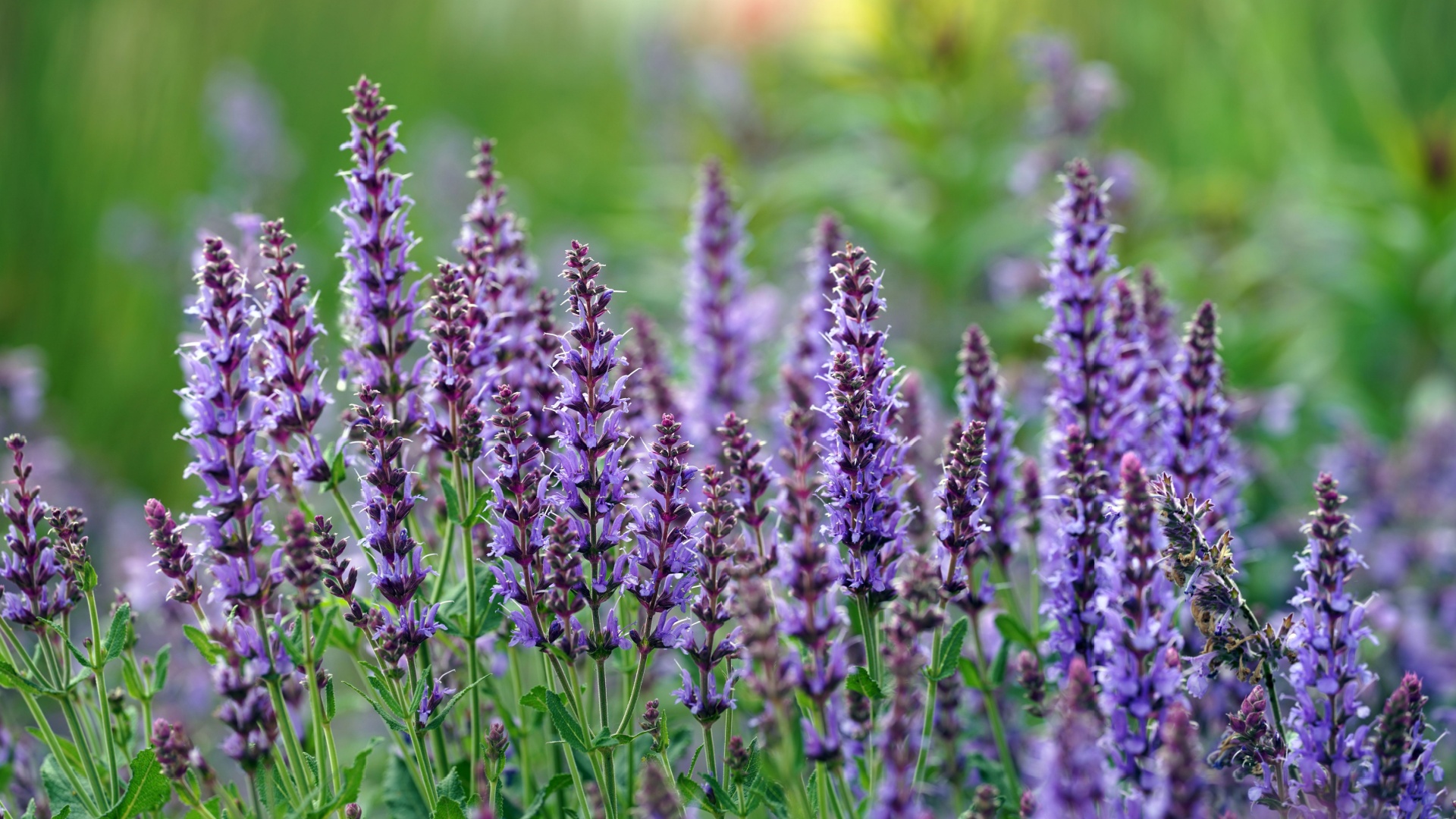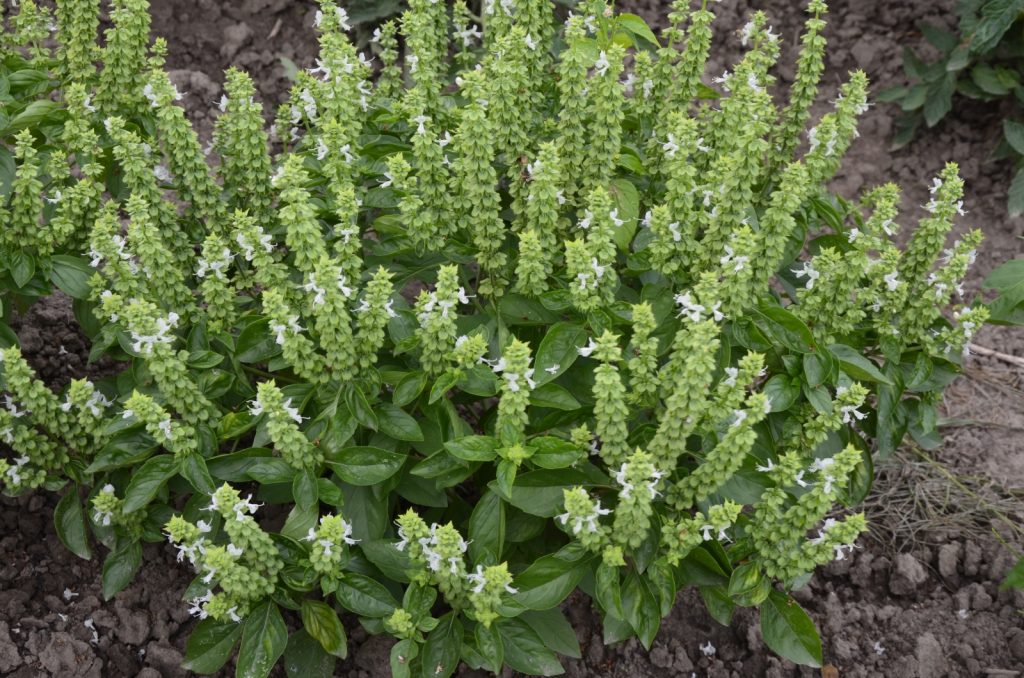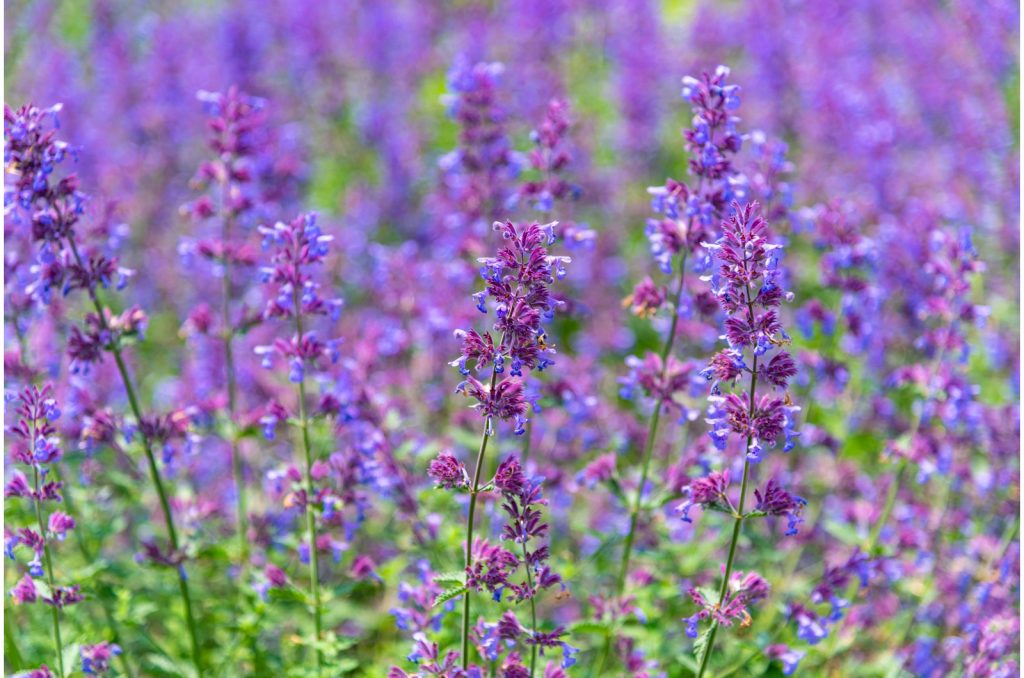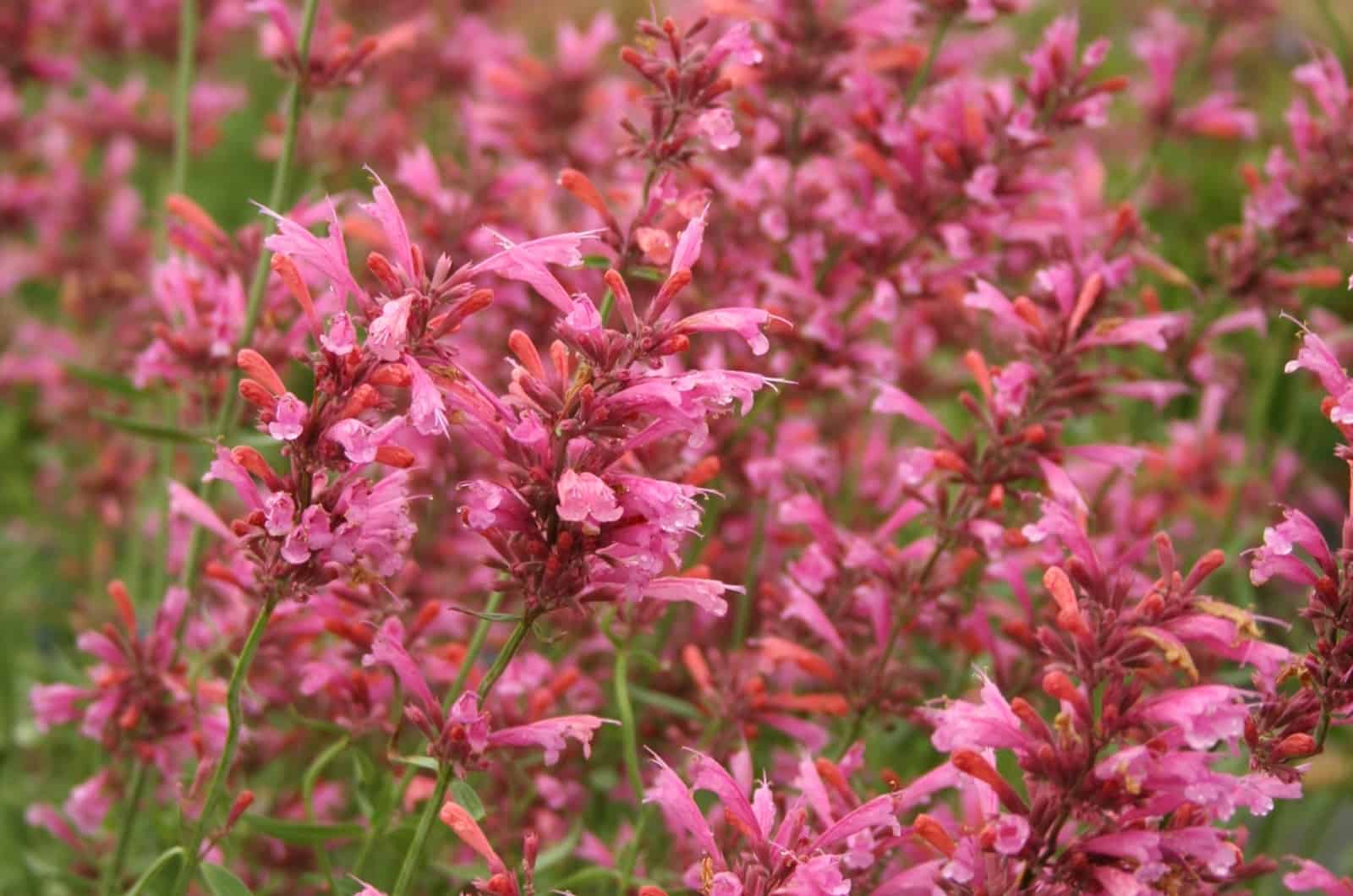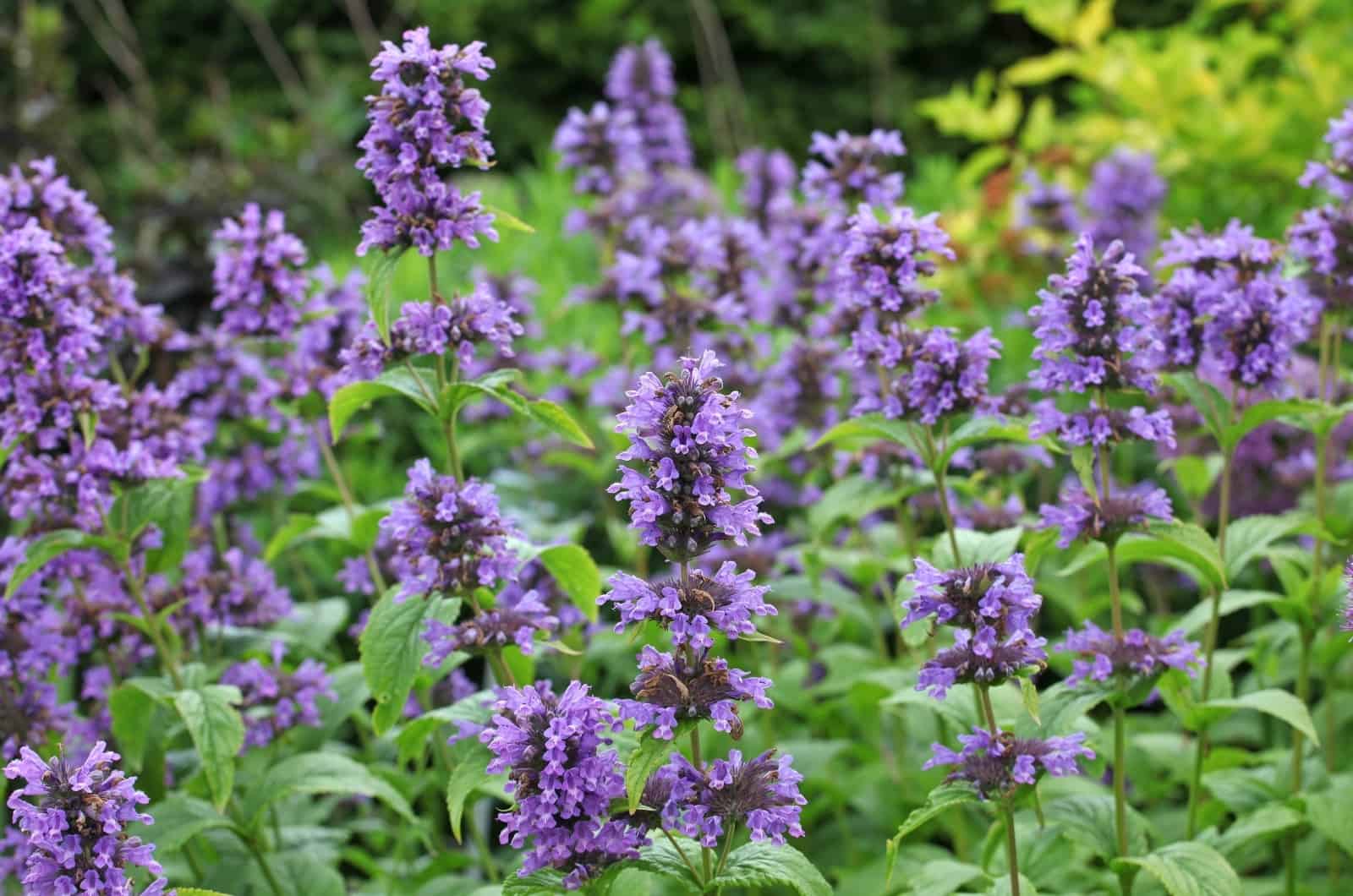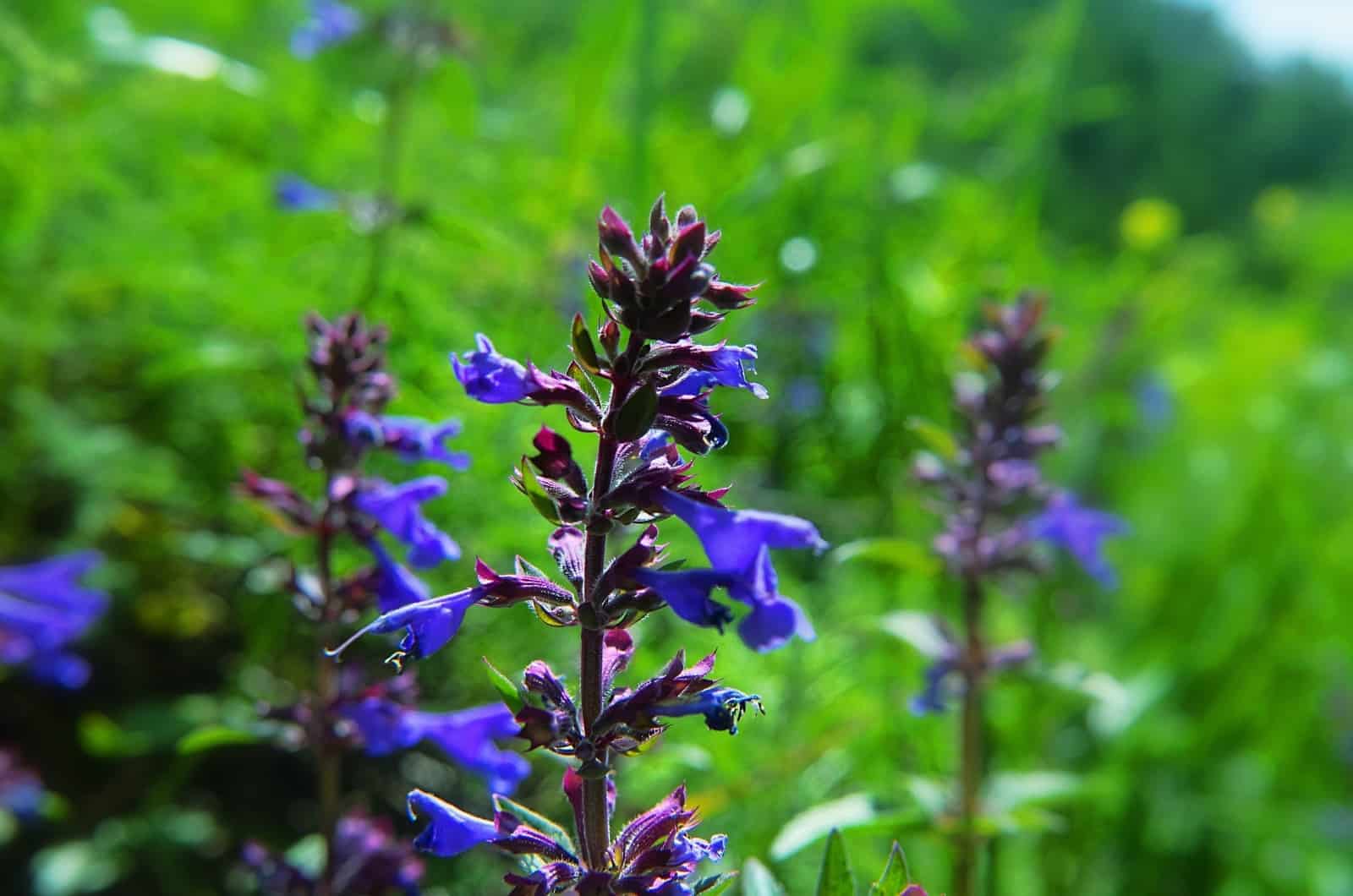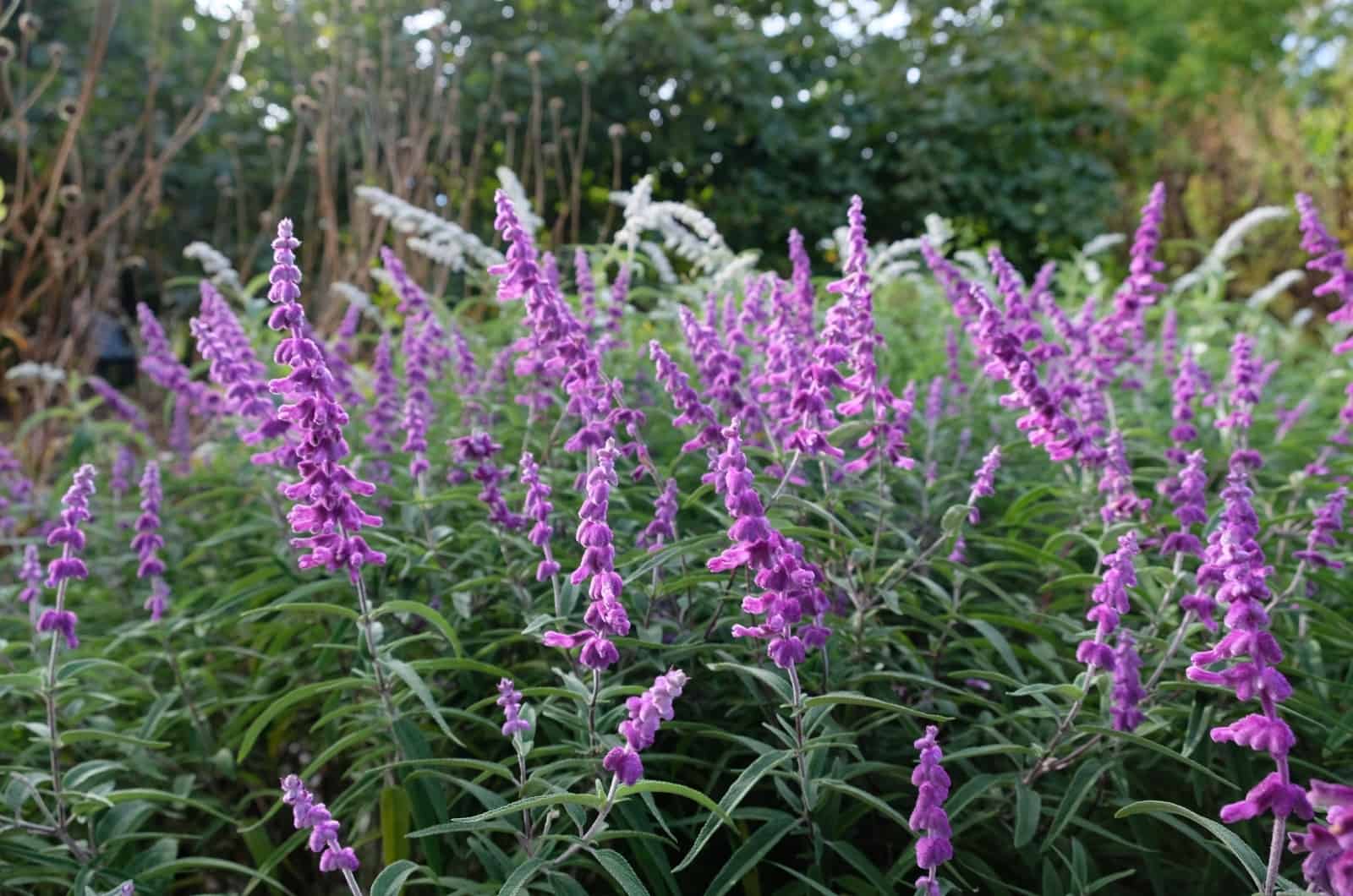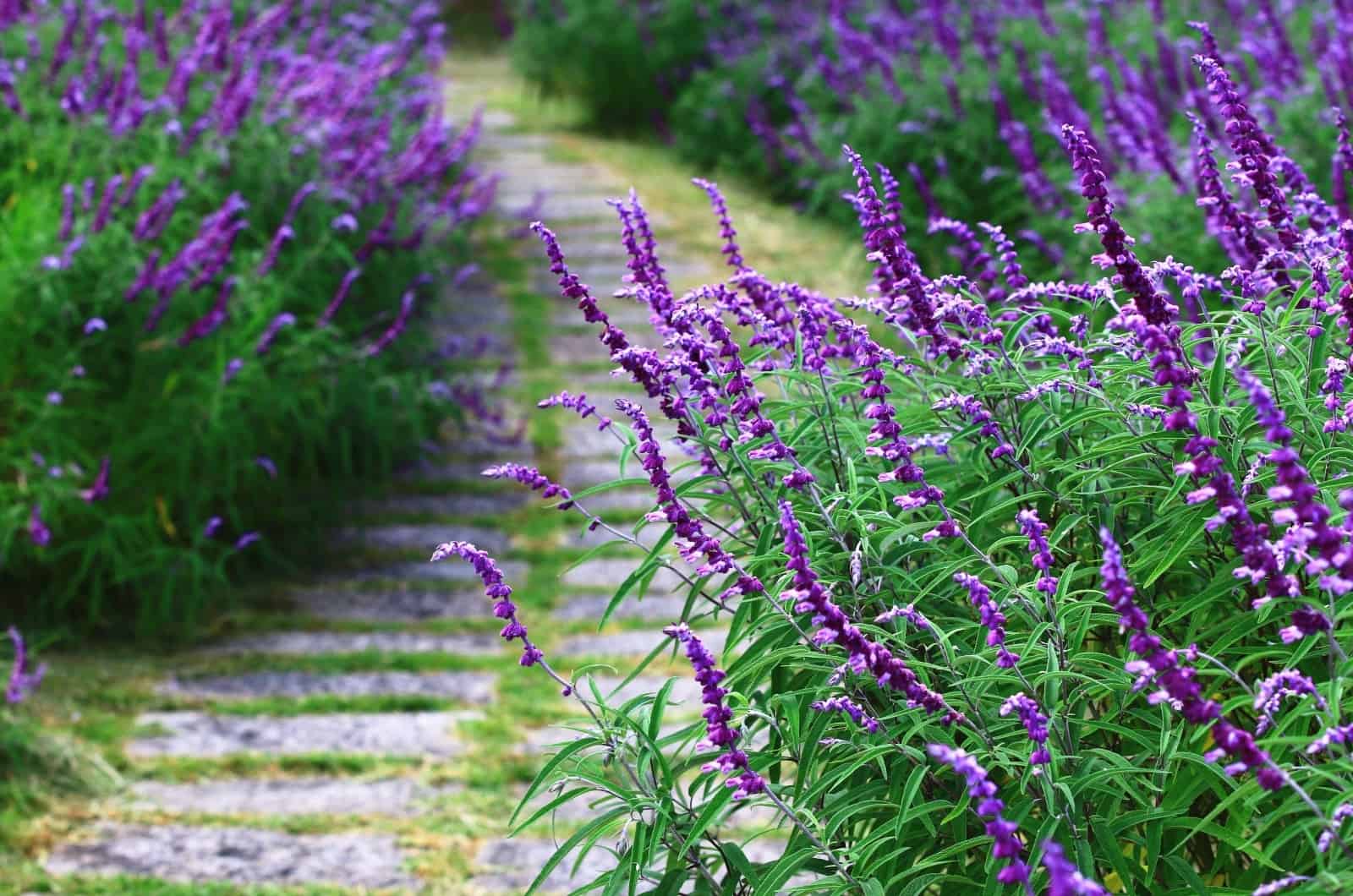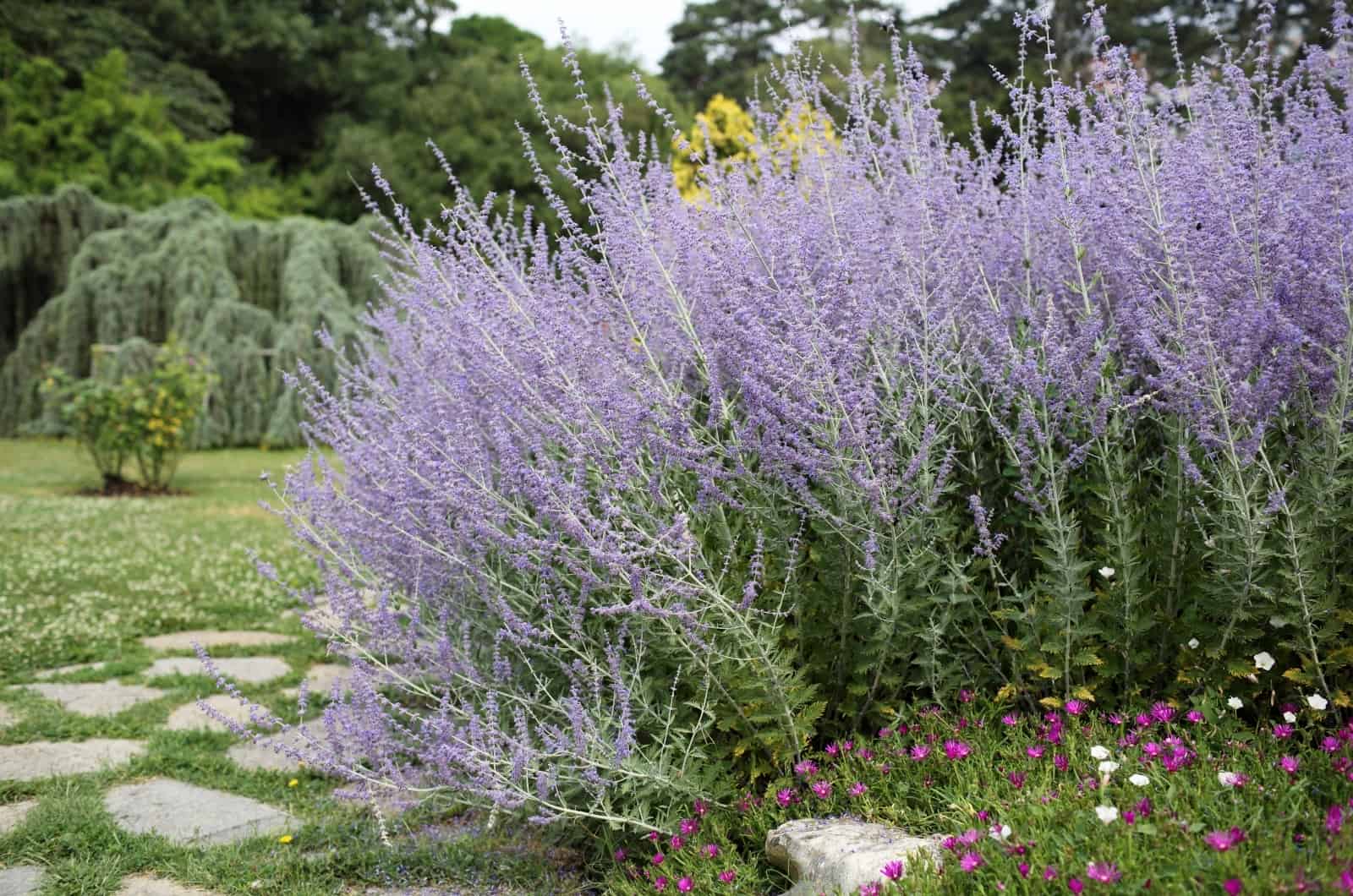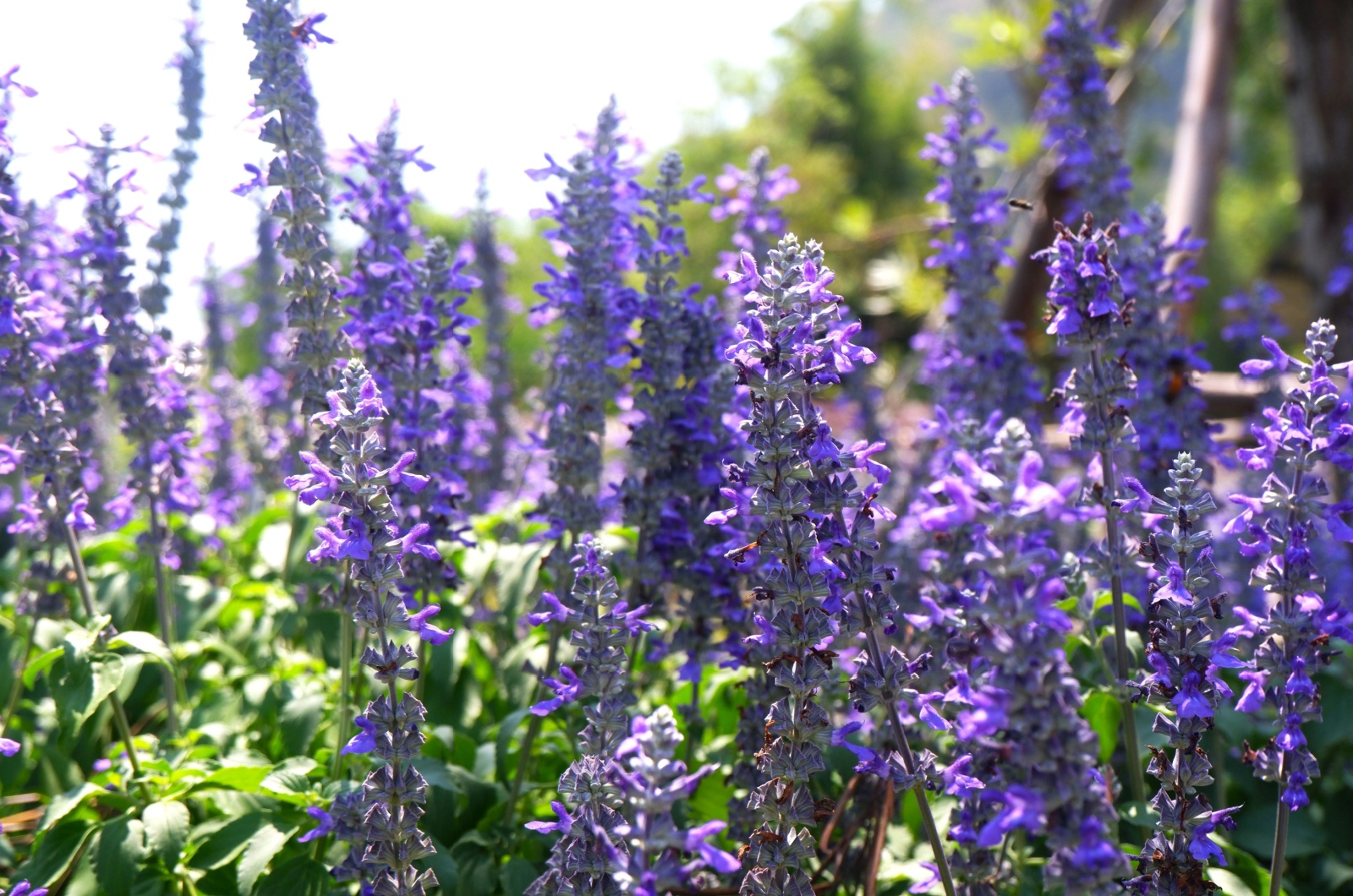Lavender are amazing-looking plants that many growers incorporate into their landscapes and herb gardens, but some people just can’t handle their pungent fragrance.
If that’s the case with you, or you just want to get a fresh look for your yard, here are some amazing plants that look like lavender, but are not!
Below, you will find ten plants that look like lavender, but are actually a different plant altogether. Some of them include basil, catnip, various types of sage, rosemary, hyssop, and more.
Of course, they don’t look exactly the same, but there are similarities such as the flower spike, foliage, or a combination of both.
1. Basil
When we look at basil leaves, we might not see the similarity between them and lavender, but once this aromatic herb flowers, it produces the same flower stalk with beautiful purple flowers.
Different varieties of basil produce various blossoms, and if you want the one closest to lavender, then that’s the tulsi plant (also called holy basil).
Once it flowers, this fragrant herb attracts pollinators, such as bees and bumblebees, and you can use its foliage in many recipes. The strong fragrance of this herb can also repel certain pests, such as aphids and mites, and also improve the flavor of its companions.
Basil plants typically require full sun conditions, fertile soil with excellent drainage, and plenty of moisture to thrive.
And if you happen to see that your basil plant is wilting, the most common reasons include under or overwatering and fungal diseases. If this happens, first determine the cause before treating it.
2. Catnip
Another plant that resembles lavender is catnip. Its silver-green, heart-shaped foliage might not look like that of lavender’s, but its long flower stalks bearing purple-blue or white blossoms definitely do.
And due to its vivid color, catnip has found its way onto the list of herbs with purple flowers.
Established catnip is drought-tolerant just like lavender, so you can even grow these plants together to maximize their benefits and introduce some diversity into your garden.
This herb can attract beneficial earthworms and repel flea beetles and aphids, which makes it a suitable companion to many different plants.
It prefers full sun and a well-draining growing medium, but can grow fairly well in partial shade and an infertile substrate.
However, the conditions in which you plant and grow it will affect its size, development, and flower production, so make sure to meet its requirements for the best results.
3. Hummingbird Mint
Hummingbird mint belongs to the genus Agastache and produces blossoms in various colors, although most growers prefer the crimson and purple ones.
They are also the plants that resemble lavender the most. The flower heads of hummingbird mint are thicker than those of lavender and attract many pollinators.
The pale or gray-green leaves have a mint-like fragrance and can even repel deer and rabbits (just like lavender).
This plant thrives in full sun, although it does prefer some shade during the hot midday and afternoon hours. Plant it in a well-draining growing medium and water the established plants only during drought spells (young ones need regular irrigation).
4. Hyssop
Hyssop might not look like lavender at first, but once you examine its deep violet or purple-blue and green, spear-shaped leaves, you’ll see the similarity immediately.
Its flower spike contains multiple flowers, but they are bushier and sometimes more sparsely positioned than those of lavender, although that depends on the variety you get.
This herb can attract hummingbirds, butterflies, bees, and various other pollinators due to its nectar-rich flowers, and can also repel certain pests, such as cabbage moths, because of its highly fragrant foliage.
Plant it in a full sun location (although it will tolerate some partial shade, it won’t thrive in it), water it regularly until it gets established and can solely survive on rainfall, and ensure that its growing substrate is well-draining.
5. Meadow Sage
The oblong foliage of this sage variety doesn’t really scream “lavender,” but once the plant produces its flower spikes, we begin to see the similarity.
The blossoms are usually violet, purple-blue, white, or pink, and a lot larger than those of lavender. Blue Hill meadow sage is one of the varieties that produces flower stalks quite similar to lavender’s.
This particular plant attracts many pollinators with its beautiful blooms, so it’s not surprising that more and more gardeners are deciding to incorporate meadow sage into their landscape design.
This herb thrives in any substrate as long as you adjust the watering schedule (irrigate it more frequently in sandy soils and less often in heavy clay mediums). Combine this with full sun and you’ll get healthy plants with plenty of blossoms!
Of course, some issues can occur, which is why detecting and solving salvia problems is crucial to saving this and any other sage plant you have.
Some common issues include fungal diseases, legginess, and browning of the leaf tips, but always exhaust all the options before implementing treatment.
6. Mexican Bush Sage
Another sage variety resembling lavender is Mexican bush sage. This species has square stems, which is something we don’t see very often.
Its pale or silver-green foliage are narrow and shaft-shaped, making them similar to lavender in this respect, and the tall flower stalks with long purple heads complete the picture.
It starts producing blossoms in late summer and attracts many pollinators to your garden.
Mexican bush sage prefers full sun exposure, has low watering needs (especially when established and able to survive on rain), and a well-draining growing medium.
You can also grow it with a number of sage companion plants, such as lavender itself, oregano, nasturtiums, rosemary, etc., where you can combine their powers and create a natural deterrent against tomato hornworms, flea beetles, rabbits, deer, etc.
7. Purple Salvias
Meadow and Mexican bush sage are only two of the many varieties of purple salvias, and we can’t list them all in this article!
Salvia, in general, resembles lavender due to their tall flower stalks and narrow and pointed foliage. They also have a similar fragrance, although lavender is much more potent.
And if you truly want a plant that looks like lavender, then salvias with purple flowers are the perfect choice because their color, foliage, and bushy growth all match.
Due to their strong scent, sage plants can deter various pests from your yard, and pairing them with lavender and other fragrant species can increase this ability.
On the other hand, their ample blossoms rich in nectar will attract pollinators, making them perfect to grow near flower and vegetable gardens.
Salvias are drought-tolerant after they establish, but water them at least once a week (or more) before this. Plant them in a quick-draining substrate and expose them to at least 6-8 hours of light each day for the best blooming and colors.
8. Rosemary
If you want a herb that’s similar to lavender, then rosemary is the plant for you! Its narrow and spear-shaped foliage are almost the same as lavender’s, although rosemary is usually much darker in color.
They have a similar fragrance, although the lavender scent is sweeter.
Furthermore, the rosemary plant doesn’t produce flower spikes like lavender does; rather, the pale-blue blossoms appear scattered among the foliage, giving it a unique and christmassy look.
(You can also get varieties with white, purple, or pink blooms if you prefer those colors.)
And if you want to add more character to your garden, then growing trailing rosemary is the perfect option for you. You can plant it in a large pot where it’ll spill over the edges, in a hanging basket for a unique display, or in the ground for more coverage.
This plant requires full sun for the best fragrance and color, fertile loamy or sandy soils, and occasional watering (once a week for potted plants, and every other week for in-ground ones).
9. Russian Sage
Another plant with an uncanny resemblance to lavender is Russian sage, although it is not real sage. This herb belongs to the genus Perovskia, and its bushy growth makes it a lavender look-alike.
They are so similar that it might be hard to tell the difference between Russian sage and lavender, although there are things that allow us to distinguish them.
Russian sage typically has blue flowers, is less fragrant, and has its signature gray-green foliage. Lavender, on the other hand, can be all this and more, as well as more diverse in color.
Some of the similarities between these plants include their ability to attract pollinators and repel unwelcome guests such as deer, rabbits, and other garden pests.
You can even plant lavender and Russian sage side by side as they have the same requirements.
Expose them to full sun, water them no more than twice a week once they get established, and plant them in a quick-draining and moderately fertile substrate.
10. Wisteria
When we see wisteria in other people’s gardens, we might not see much similarity between it and lavender.
However, this plant is actually a woody vine that produces large, lavender-like clusters of flowers in pale purple and violet shades.
It attracts pollinators just like lavender, but we tend to grow it for its amazing shape. You can train this vine to grow vertically on your walls or prune it and turn it into a unique tree.
Some gardeners prune their lavender into trees as well, so you can make a unique topiary with these two plants.
Place it in full sun, a moderately fertile and moist growing substrate that doesn’t dry out too fast, and water it only during dry spells once it gets established (irrigate it regularly while young).
Final Thoughts
There are many plants that look like lavender, including basil, catnip, various types of purple sage, Russian sage, rosemary, hyssop, hummingbird mint, and wisteria.
Some of them resemble lavender more than others, but each can bring something unique to your garden, whether it is a trailing habit, possibility to be pruned into a tree, or a splash of purple color.
We hope that these plants can help you take your landscaping design and skills to another level.
Until next time!

